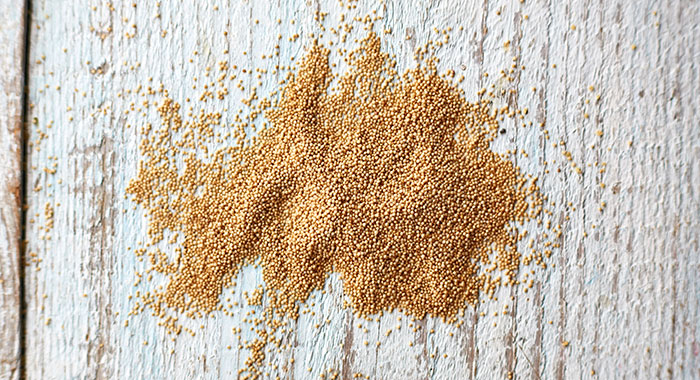
Pronounce it: am-uh-ranth
Amaranth is a protein-rich, gluten-free pseudo-grain (like quinoa) and a distant relation to Swiss chard and spinach. An amaranth plant produces multiple seed heads, each of which can yield up to 5,000 seeds. It is one of the world’s oldest crops, revered by the Aztecs and Incas, who believed that it had supernatural powers. Mild, nutty and malty tasting, amaranth comes in whole sand-coloured seeds, flour and flake form and also appears in processed products such as cereals and pasta.
Prepare it
Cooking with amaranth can be tricky as the grains tend to take on a gluey consistency – mixing with a drier grain usually gives better results.
Store it
Store amaranth in a sealed container in a cool, dark, dry place.
Cook it
Mix amaranth flour with other flours and use in breads, muffins and pancakes or as a gluten-free thickener of soups and sauces. Whole amaranth can be boiled and mixed with other grains to make salads and side dishes, and added to dips or stews. It can also be combined with oats to make porridge.
Alternatives
Try quinoa.
Be the first to comment on "Amaranth"